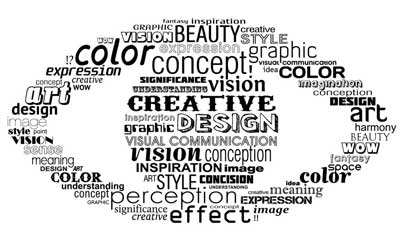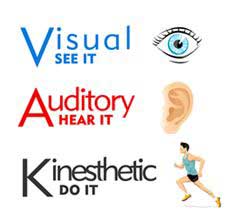By Mariama
June 2019
Maybe you know a visual learner. Hi, my name is Mariama and I’m a visual learner! Maybe you are a visual learner. Whatever the case may be we all learn different ways. You can take the time and search for study tips like I did. Kinesthetic learners, auditory learners, and visual learners are the three types of learners I was taught that all individuals are. I was taught this at a very young age and all through the years have known I was a visual learner. Here’s what I found after my search for study tips for visual learners.

You should know by now that a large majority of school work is visual. That being said, we are used to getting handouts, copying notes and seeing visual examples on the dry erase board. However, while some follow easily and others listen well, without some visual techniques all students would struggle. So we’re all visual learners to a degree! As well, we’re all auditory learners to a degree. And we’re all kinesthetic learners also; we need visual examples more, though.
Ways to know what type of learner you are would be to take a minute and do some research. Here are some of the traits of a visual learner. A visual learner would prefer to see the information at any given time rather than have it spoken to them. Some of us misunderstand or misinterpret oral directions where-as seeing them we can get a better sense of what they are. We have vivid imaginations and think in mostly pictures. We need something to watch so we tend to stare (guilty). Some of us may even be artistically talented in the visual arts. While others of us excel in written communication, some may be easily distracted by sounds.

Tips for studying for a visual learner include some of the following: Take detailed notes, make important details noticeable by underlining or highlighting, draw pictures in notes to make them more memorable, use a variety of pens, pencils, notecards, on different topics or concepts; Write it!, use diagrams, pictures, outlines, etc.; place plastic over diagram to label or rewrite over and over, Rewrite or re-draw things from memory, make your study space visually inviting, and study in a quiet place away from verbal disturbances. These tips are just some, although, I’m sure you can think of your own!
Speaking from experience, it is always a good thing to see what you need to learn in visual form for reinforcement. I always need visual material when studying my lessons and school related subjects. I also commit to some of the study tips for visual learners. I feel strongly about note taking and highlighting certain notes, its’ imperative in my book.
All in all visual learners are truly not alone. All individuals are all three types of learners but excel in one way of learning. Although, I remember being told one time that kinesthetic learners are the best, where would we be without visual learners? We think in color!
Annotation(s)Lee S, Vivian. University of Utah School of Medicine Learning Resources, 2014. http://medicine.utah.edu/learningresources/tools/visual.php
U.S. Career Institute also offers online training for many other great careers
Do you like animals? You might find satsifaction with a career as a veterinary assistant. Take a look at our
online veterinary assistant program.
If healthcare holds more interest for you, you should investigate our online dental assistant course, our online medical coding and billing course,
or our online pharmacy technician course.
